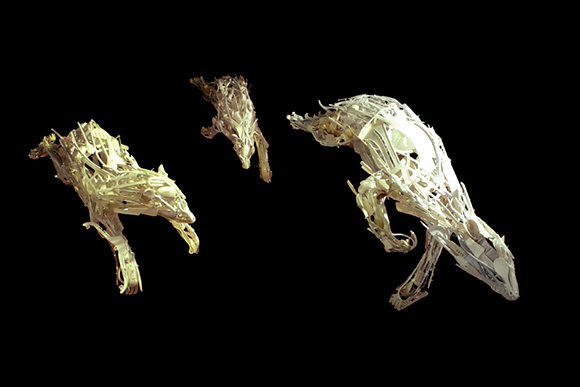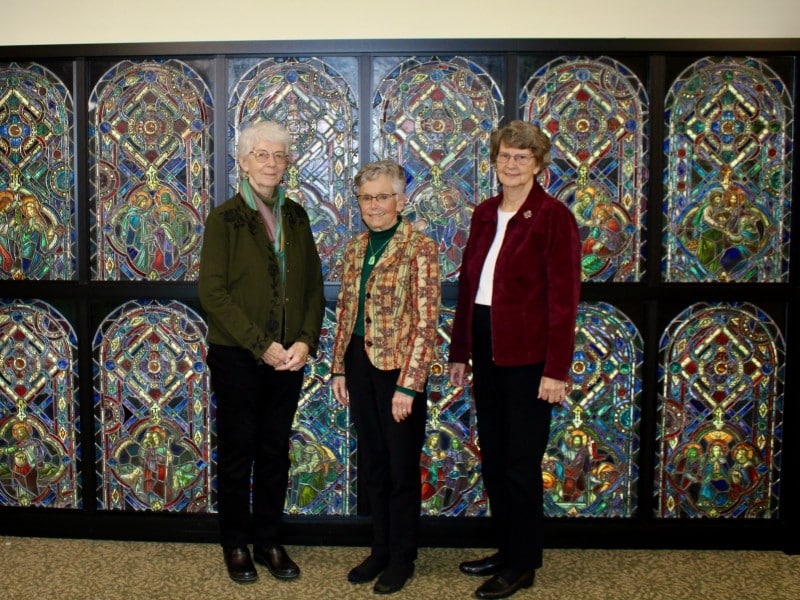Art exhibition at KIA views world of nature through another lens
Nature has long been an inspiration for artists. The glorious beauty of untamed wilderness found in pristine landscapes hang in museums everywhere.
For David Wagner those depictions are not enough. So he curated Environmental Impact. The 75 paintings, photographs, and sculptures in the exhibit deal with pressing environmental issues of our time–land development pressures on wildlife populations, fire and drought and water rights issues in the West, the Gulf oil spill, Global Warming, the dangers of nuclear waste, and many more.
Wagner has been in the museum exhibition business for more than 35 years, first as a museum director, then as president of a company that produces traveling exhibitions for museums.
“For more years than I care to remember, I’ve wanted to produce an exhibition of work by artists who possessed the courage and the talent to take on subjects like those you see in Environmental Impact,” Wagner says.
He wanted a show that would share the work of leading contemporary artists who chose to focus their work on global as well as local environmental issues. He also wanted to heighten public awareness and concern about the degradation of diverse environments through the power of art.
To create the show he started with artists he knew and respected. These were artists he says collectively shaped the Environmental Movement, a movement in art that gained traction in the last quarter of the 20th Century.” As the exhibition and his thinking about it developed, Wagner went through a re-examination of his knowledge of Environmental Art (as he refers to it) as he was introduced to work by artists who were new to him.
From the former group he included environmental works such as Requiem for Prince William Sound, Kent Ullberg’s elegy to victims of the Exxon Valdez oil spill in Alaska and Still Not Listening, a sculpture based on a poem of the same title by Leo Osborne, expressing frustration and outrage directed at the April 20, 2010 Deepwater Horizon oil-rig explosion and subsequent spill in the Gulf of Mexico. Wagner included Carmanah Contrasts, Robert Bateman’s expression of his concern about the loss of old growth forests in the Pacific Northwest by contrasting old-growth and clear-cut forest imagery in a new, postmodern style.
From the group of artists who were new him Wagner added Japanese sculptor Sayaka Kajita Ganz and her installations fabricated from found objects and group of artists represented by Catharine Clark Gallery, such as Chester Arnold, Chris Doyle, Scott Greene, and Julie Heffernan.
“There are many more artists, of course, who together address a plethora of other environmental issues ranging from toxic waste to the impact of global warming in the Arctic, to air and water pollution, to the recent loss of bee populations, out-of-control wildfires, encroachment of urban development on habitat, and illegal trade in wildlife, to name a few,” Wagner says.
He initially had not considered photography but added it “because of its sheer strength, breadth, and depth.”
The complete list of artists included in the exhibition is here.
The Kalamazoo Institute of Art is the third venue to exhibit Environmental Impact.
When the exhibit went up in Canton, Ohio, IndeOnline.com said that though the subjects of the artwork all “display peril” the artwork itself is “frequently lovely” in its execution. “One comes away from this assemblage of fine art with … a flame of conscience that strangely, whimsically, soulfully wishes for something other than that which is before us.”
And Artwach said: “Who could reasonably doubt that truly fine art has the capacity to draw us into genuine reflection – genuflection, if you will – on what we instinctively recognize as the most noble, pure and indeed beautiful elements of the world we inhabit? Conversely, art can just as well bring us to mourning the loss of those same elements. It is the realization of art’s dual potentiality – to transport our souls to sublime heights of reverence and celebration, or induce anger and despair – that makes this traveling exhibit, curated by Dr. David J. Wagner (author of American Wildlife Art), so utterly compelling.”
See Environmental Impact at the Kalamazoo Institute of Art, Feb. 22-May 4. Wagner will be at the KIA for a lecture on the exhibition at 6 p.m. Friday, Feb. 21. His talk begins at 6:30 p.m. KIA members are admitted free. Admission for others is $10.
Source: David Wagner, David Wagner L.L.C.

















